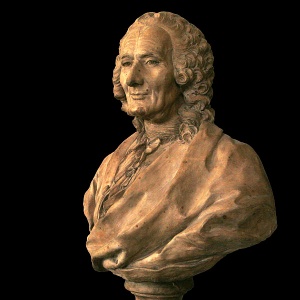The 1725 account in Mercure de France of two Native Americans dancing at a Paris theater provides a detailed link between the large corpus of earlier European descriptions of New World music and the composition of Rameau’s harpsichord piece Les sauvages.
The account and the composition constitute a significant episode in the prehistory of ethnomusicology. Rameau’s detailed characterization of the Indians’ performance in the piece develops initiatives by 17th-century French musicians, and his later operatic use of Les sauvages in Les Indes galantes mirrors the ambiguities of Europe’s response to the Americas in the 18th century.
This according to “Rameau’s American dancers” by Roger Savage (Early music XI/4 [October 1983] pp. 441–52).
Today is Rameau’s 330th birthday! Above, the 1760 bust of the composer by Jean-Jacques Caffieri (click to enlarge); below, his Rondeau des Indes Galantes, which is based on Les sauvages.
Related article: Ballet and sauvagerie



